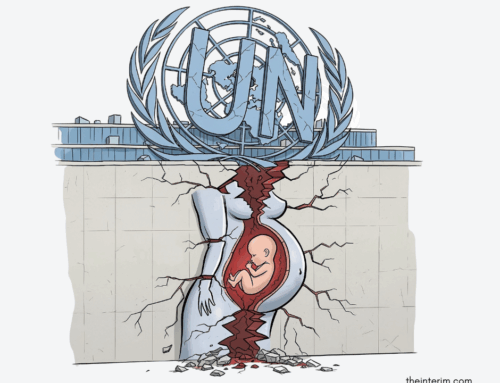 Grassroots Liberals: Organizing for Local and National Politics by Royce Koop (UBC Press, 212 pages, $29.95 paperback)
Grassroots Liberals: Organizing for Local and National Politics by Royce Koop (UBC Press, 212 pages, $29.95 paperback)
There has been much talk in the past few years about renewing the Liberal Party by focusing on its structure, from the federal executive and the provincial wings of the federal party down to the constituency associations at the riding level. Indeed, reform of their party structure was a major topic of discussion at their recent biennial convention.
There seems to be too much focus on party infrastructure instead of the root of recent Grit problems – its leftward lurch on policy and inept leaders are more likely culprits when determining the downfall of the once glorious party – but indeed, the Liberal Party of Canada is doing itself no favours with its current setup. Currently, the structure creates fiefdoms which local and provincial party operatives are more interested in defending at the expense of growing the party and giving it a vigour and liveliness in communities across the country.
Royce Koop, a political scientist, has written a book, Grassroots Liberals: Organizing for Local and National Politics, that examines the Liberal Party’s organization at the local level. Noting that reforms brought in during the Diefenbaker interlude in which the federal Liberals separated from the mostly ineffective provincial parties (a process best described by Joseph Wearing in his 1981 book, The L-Shaped Party: The Liberal Party of Canada 1958-1980), to create a pan-Canadian party. Over time, the provincial wings of the federal party became their own smelly little fiefdoms a problem replicated at the riding level; this is precisely what the 1958-1960 reforms were designed to prevent. Koop interviewed 76 grassroots Liberals in a number of British Columbia (5), Ontario (7) and New Brunswick (4) ridings to describe the work done by activists in constituency associations and during campaigns.
The basic question Koop seeks to answer is how do local activists co-operate (or not) at the provincial and federal levels. After describing the kind of grassroots work that activists carry out and the level of co-operation that exists (or doesn’t) Koop finds that it can depend a lot on the personalities in place as to whether the provincial and federal constituency associations and campaigns are “integreated,” “mixed,” or “differentiated.” Koop finds that “informal linkages” are the norm, but where they exist they seem to be based on a common set of principles and fidelity to the Liberal brand. In other words, where local Liberals work on both the provincial and federal campaign, it is because these volunteers really believe in the Liberal Party. It is all common-sense and the the most interesting cases (Perth-Wellington in Ontario) are the ones in which there is minimal or no co-operation.
To political science geeks, this will all be very interesting and relatively novel even if the conclusion is not terribly surprising; there is little political study of parties at the riding level so Koop fills a gap with Grassroots Liberals.
There are lessons in this book for pro-life and pro-family voters.
Campaign Life Coalition encourages its supporters, regardless of their partisan affiliation, to become involved in the party of their choice to effect political change by supporting pro-life candidates and initiating policy discussion at the grassroots levels by becoming active in their local riding associations. Some have and while many have remained pro-life, others become seduced by the intrigue and excitement of politics to become party activists rather than pro-life activists.
Although Grassroots Liberals is not a how-to manual, it illustrates that there is no “one way” to do federal politics at the local level. It is possible, partly depending on the association’s history and members, and the local elected representatives (if there are any), to work for pro-life candidates – for nomination or in the general election – and not become blindly beholden to the party. This might be easier in British Columbia and Quebec where the provincial and federal parties are distant cousins and many members work for another party at another level; Stockwell Day, a former cabinet minister in Stephen Harper’s government, and Preston Manning, former leader of the Reform Party, have both endorsed the Liberal Party in B.C., despite the re-emergence of the B.C. Conservative Party. Indeed, Koop interviews many activists in B.C. who are Liberals provincially and Conservatives federally. This is obviously less common in Ontario (especially urban areas), but would probably be replicated in Saskatchewan, where the provincial Liberals 1) haven’t won a seat since 2003 and 2) formally split from the federal party in 2009.
Koop’s book was written before the 2010 election and published before last month’s convention so it does not take into account the collapse of the Liberals under Michael Ignatieff nor could it anticipate the changes undertaken by the Liberals in creating a new classification of supporter (distinct from a member) which should open up the party to new grassroots activists.
Indeed, as noted in our story, “Liberal renewal means same-old, same-old,” (p. 2) these new supporters present an opportunity for pro-lifers who are erstwhile Liberals to return closer to their political home and, just perhaps, help rejuvenate the party by bringing it back to the center on moral issues.
Anyone planning to become active at the grassroots level for the Grits would do well to read Royce Koop’s book to better understand into what exactly they might be getting.
Paul Tuns is editor of The Interim and author of Jean Chretien: A Legacy of Scandal.




